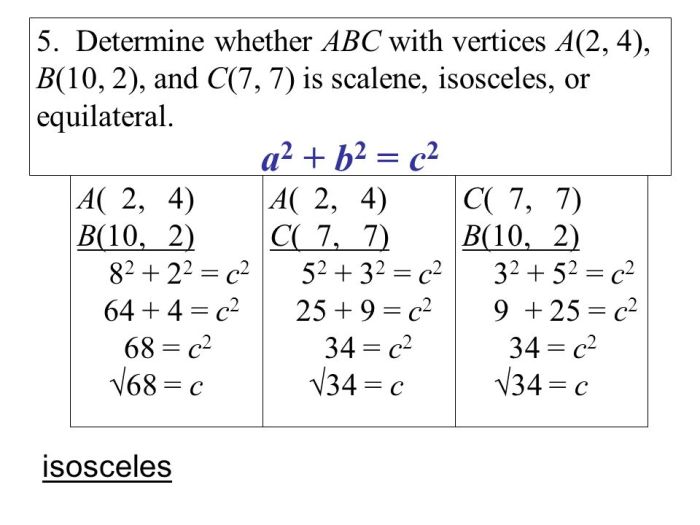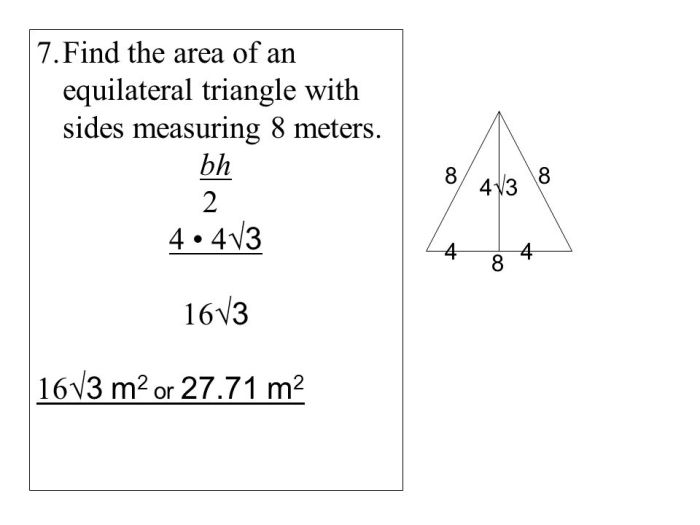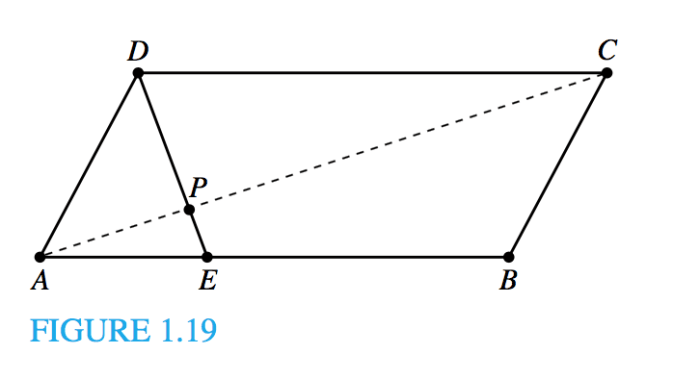Chapter 9 Test A Geometry Answers: Unveiling the Secrets of Geometric Mastery
Delve into the captivating realm of geometry with Chapter 9 Test A Geometry Answers, your ultimate guide to unlocking the mysteries of geometric concepts and problem-solving techniques. This comprehensive resource provides a solid foundation in geometric principles, empowering you to conquer any geometric challenge with confidence.
Chapter 9 Test A Geometry: Concepts and Terminology
Chapter 9 of a Geometry textbook introduces fundamental concepts and terminology related to geometric figures, including triangles, circles, and quadrilaterals. These concepts form the foundation for understanding more complex geometric relationships and solving problems.
Geometric Terms
Key geometric terms covered in Chapter 9 include:
- Vertex: A point where two or more line segments meet.
- Side: A line segment connecting two vertices.
- Angle: A measure of the space between two intersecting line segments.
- Triangle: A polygon with three sides and three vertices.
- Circle: A set of points equidistant from a given point called the center.
- Quadrilateral: A polygon with four sides and four vertices.
Geometric Figures
Chapter 9 also explores various geometric figures and their properties:
- Triangles: Triangles are classified by their side lengths (equilateral, isosceles, scalene) and angle measures (acute, right, obtuse).
- Circles: Circles are characterized by their radius (distance from the center to any point on the circle) and circumference (distance around the circle).
- Quadrilaterals: Quadrilaterals include squares, rectangles, parallelograms, and trapezoids, each with specific properties related to their side lengths, angles, and diagonals.
Problem-Solving Strategies and Techniques
Problem-Solving Strategies
Effective problem-solving in Geometry requires a systematic approach. Chapter 9 introduces strategies such as:
- Drawing diagrams to visualize the problem.
- Using logical reasoning to identify patterns and relationships.
- Applying algebraic methods to solve for unknown variables.
Problem-Solving Techniques
Common techniques for solving geometry problems include:
- Using angle and side relationships (e.g., angle sum theorem, triangle inequality theorem).
- Calculating area and perimeter of geometric figures.
- Applying transformations (e.g., translations, rotations, reflections).
Tips for Problem-Solving
To approach geometry problems effectively, consider the following tips:
- Read the problem carefully and identify the given information.
- Draw a diagram to visualize the situation.
- Break down the problem into smaller steps.
- Use appropriate formulas and theorems.
- Check your answer for reasonableness.
Theorems and Proofs

Important Theorems
Chapter 9 establishes fundamental theorems in Geometry, including:
- Triangle Inequality Theorem: The sum of the lengths of any two sides of a triangle is greater than the length of the third side.
- Angle Sum Theorem: The sum of the interior angles of a triangle is 180 degrees.
- Pythagorean Theorem: In a right triangle, the square of the length of the hypotenuse is equal to the sum of the squares of the lengths of the other two sides.
Geometric Proofs
Geometric proofs demonstrate the validity of statements about geometric figures. Chapter 9 explains the process of constructing proofs using:
- Definitions and postulates (statements assumed to be true without proof).
- Previously established theorems.
- Logical reasoning and deductive arguments.
Applications of Geometry in Real-World Contexts

Geometry finds practical applications in various fields, including:
Architecture and Engineering
- Designing buildings, bridges, and other structures.
- Calculating loads and stresses.
- Ensuring stability and efficiency.
Design and Art
- Creating visually appealing patterns and shapes.
- Designing furniture, textiles, and other objects.
- Producing artwork and sculptures.
Everyday Life, Chapter 9 test a geometry answers
- Navigating using maps and GPS.
- Measuring distances and areas.
- Solving puzzles and games.
Practice Problems and Solutions: Chapter 9 Test A Geometry Answers
| Problem | Solution |
|---|---|
| Find the area of a triangle with a base of 10 cm and a height of 8 cm. | Area = (1/2)
|
| Calculate the circumference of a circle with a radius of 5 cm. | Circumference = 2πr = 2π
|
| Prove that the sum of the interior angles of a quadrilateral is 360 degrees. |
|
FAQ
What are the key geometric terms covered in Chapter 9?
Chapter 9 introduces fundamental terms related to triangles, circles, and quadrilaterals, such as angle, side, radius, diameter, and perimeter.
How can I effectively solve geometry problems?
Employ problem-solving strategies like using diagrams, applying logical reasoning, and utilizing algebraic methods. Focus on identifying angle and side relationships, calculating area and perimeter, and understanding transformations.
What is the significance of theorems and proofs in geometry?
Theorems provide the foundation for geometric reasoning, while proofs demonstrate the validity of these theorems through logical arguments. Understanding proofs strengthens your deductive reasoning skills.

